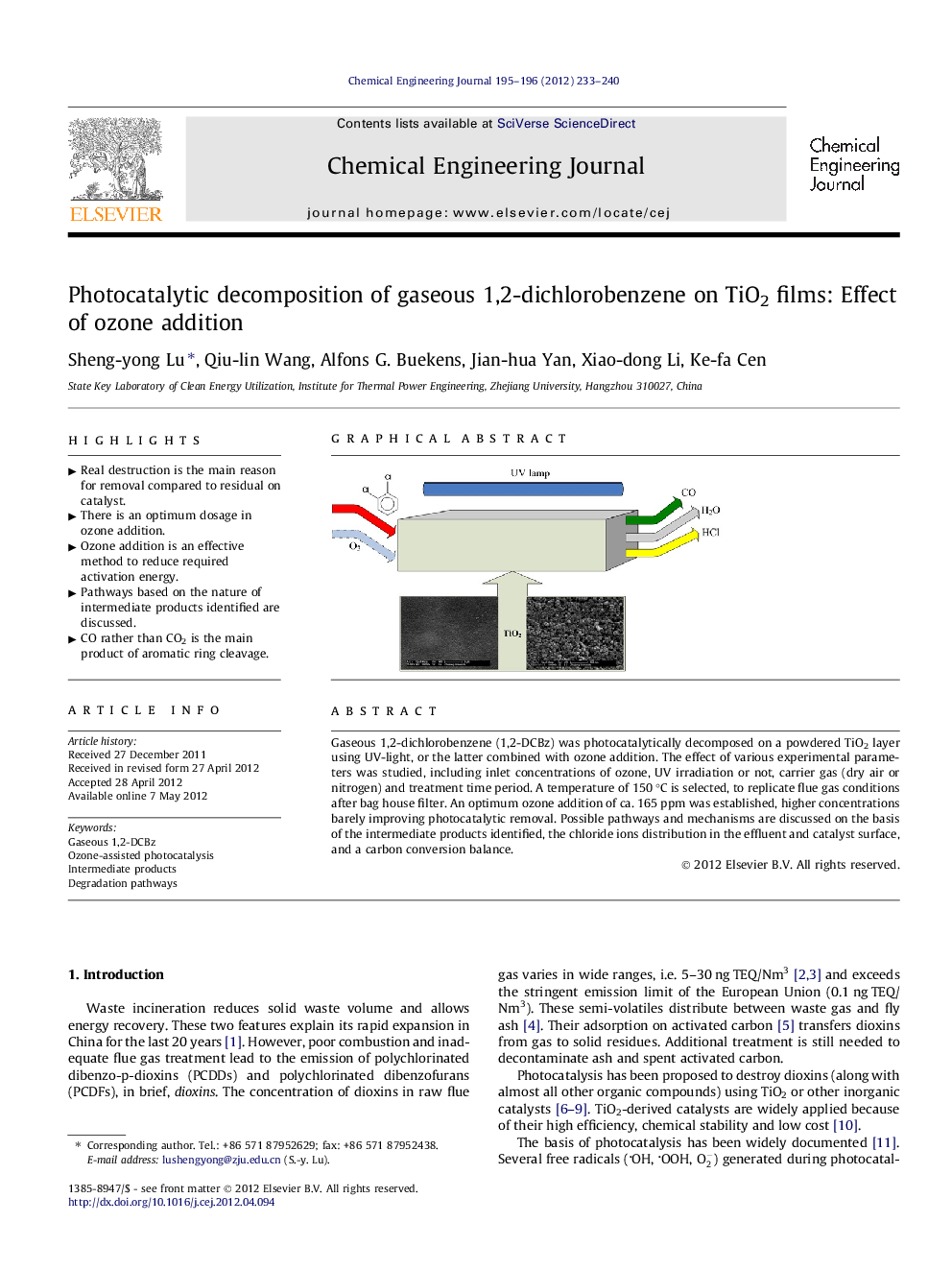| Article ID | Journal | Published Year | Pages | File Type |
|---|---|---|---|---|
| 149752 | Chemical Engineering Journal | 2012 | 8 Pages |
Gaseous 1,2-dichlorobenzene (1,2-DCBz) was photocatalytically decomposed on a powdered TiO2 layer using UV-light, or the latter combined with ozone addition. The effect of various experimental parameters was studied, including inlet concentrations of ozone, UV irradiation or not, carrier gas (dry air or nitrogen) and treatment time period. A temperature of 150 °C is selected, to replicate flue gas conditions after bag house filter. An optimum ozone addition of ca. 165 ppm was established, higher concentrations barely improving photocatalytic removal. Possible pathways and mechanisms are discussed on the basis of the intermediate products identified, the chloride ions distribution in the effluent and catalyst surface, and a carbon conversion balance.
Graphical abstractFigure optionsDownload full-size imageDownload as PowerPoint slideHighlights► Real destruction is the main reason for removal compared to residual on catalyst. ► There is an optimum dosage in ozone addition. ► Ozone addition is an effective method to reduce required activation energy. ► Pathways based on the nature of intermediate products identified are discussed. ► CO rather than CO2 is the main product of aromatic ring cleavage.
